Rapids are a place of extremes -- extremes in water depth, extremes in bottom erosion, extremes in even current speeds, as we shall see. Rapids are always better places to be searched carefully by the fly fisher -- carefully in terms of wading, and carefully in terms of making certain that no good water goes unexplored.
Rapids are tough places to put a fly down and expect it to float with any sort of dead drift. But there are some tricks to it. First comes reading waters, then comes the fishing. In all rapids, there is a "secret river". It may be quite narrow, and then again it may be fairly wide. It's the easy water, the place one can toss a fly without much need to do more than use a Harvey-style leader to get a good float. During the salmon fly hatch [on Montana's Madison River] (and every other hatch for that matter), the fishing can be fast and furious in the secret river, and it's the first place I hit. It's the water right against the bank -- you know, that stuff one wades through to get out there into the "real" river. But think about it for a moment: Where's the best place for an energy-conserving trout to park itself while getting food in the easiest fashion? That's right: In the slow water next to the shore where the stoneflies are hanging on every bush like overly ripe fruit.
When guiding anglers on the Madison, my long-time friend, Mike Lawson, tells clients to cast into all those places where one wouldn't normally fish -- in other words, the secret river. Those that pay attention to his advice find out very quickly that Mike is a shrewd water-reader, indeed. Most anglers use the secret river as their wading lane, when in fact, it should be their fishing lane.
So, lesson number in in reading rapids is very simple -- find the secret river on either side of the rapids, and fish it hard. Some of it will be deep and some of it will be shallow, so expect to find a mixture of prime lies and feeding lies. Some of it may have undercut banks and sometimes there are boulders blocking your wading; too deep on the outside to go around and too tall to clamber over. One has to haul out and walk around. But when you do, watch it. The hydraulic cushion right in front of that boulder may be holding a boulder-sized brown. Don't race through the secret river.

Interestingly, the secret river is not a secret at all to one select group of individuals. In fact, it is their preferred area to fish. This set of individuals are the float guides. Their mantra, repeated time and time again to clients who struggle to comply, is: "Get the fly closer to the bank."
Odd, isn't it? The guys floating mid-river are told by their guides to pound the banks, while the guys that are wading struggle to get their flies to mid-river.
Editor's Note: The above is an excerpt from "Reading Waters", by Gary Borger. It is the second book in Gary's "Fly Fishing: The Book Series". As we've noted before, if you're not familiar with the series, you're missing out. Each book is a fountain of information resulting from years of well-heeled experience. The first three books offer a bevy of knowledge. Most importantly, the lessons in the book are illustrated by warm, entertaining anecdotes from Gary Borger's life as a fisherman, making the books not only valuable tools for the fly fisherman, but an absolute pleasure to read. To learn more about the entire series, visit GaryBorger.com.




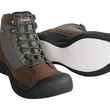



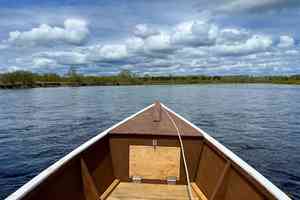



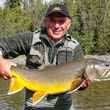
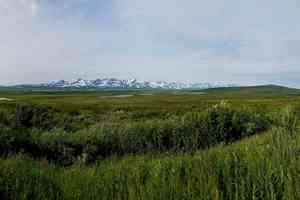

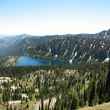
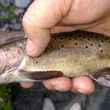



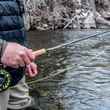




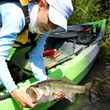
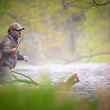
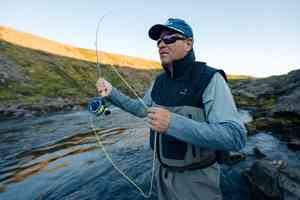

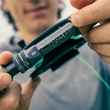


Comments
ginkthefly replied on Permalink
I spend more and more time fishing the banks, and my catch rate has dramatically increased.
Still, I have to fight the urge to blast a cast out into the middle of the river (where admittedly I have less of a clear picture of where to target).
If I'm not fishing the banks, it is because there is a clear seam or pocket or prime lie I'm targeting out in the middle of the river.
DDon replied on Permalink
Likewise. I'm still tempted to step right in and cast out, but I'm doing my best to teach myself to not walk through water until I've fished it.
mkjames replied on Permalink
When fishing near the bank, what is the minimum water depth you'll actually fish? I mean, you're certainly not tossing a fly into ankle deep water with a sandy bottom, are you?
Chad Shmukler replied on Permalink
It depends on a number of factors, but be sure not to ignore shallow water.
A healthy 17" brown trout came out of a spot in the stretch pictured in the first image -- a hydraulic cushion in front of a small boulder -- that couldn't have been more than a foot deep.
neusewader replied on Permalink
Just like fishing for largemouth bass!
Chad Shmukler replied on Permalink
Especially if you're tossing a mouse.
Aileen Lane replied on Permalink
Oh yes..the banks! That's where I have been most productive. We all need to take out time and look before stepping into the river - I've seen huge browns right in front of me.
Chad Shmukler replied on Permalink
The point Gary makes at the end about the float guides is the most instructive, in my opinion.
I've had the look before you step discussion with a number of anglers who I can tell are dismissing the message. But if you leverage the bit about the guys fishing from boats, who could argue?
Steve Zakur replied on Permalink
I recall my first wading trip with a guide. Before we stepped in the river he made me fish the shallow water near the bank. We then waded in a bit and fished the shallow water above and below us. We didn't get anything but he did encourage me to do so in the future. Staying close to the bank we fished water I would normally have been standing in and caught fish. Looking downstream he pointed to two guys and said "They're standing where they ought to be fishing". It's stuck with ever since.
Dean K Miller replied on Permalink
I watch and wait for the "real river fishers" to by pass spots such as those described above. Given a bit of time, the fish settle back in and are waiting for the food to float by. Having spent my youthful years on small streams with rapid sections, I learned early to hunt out the non-fishing water, places that looked like a good place for a fish to hide. In areas of high pressure fishing, often these are the only spots one can find fish. I'm always amazed but never surprised at the places from which one can catch fool a wary trout.
Pages